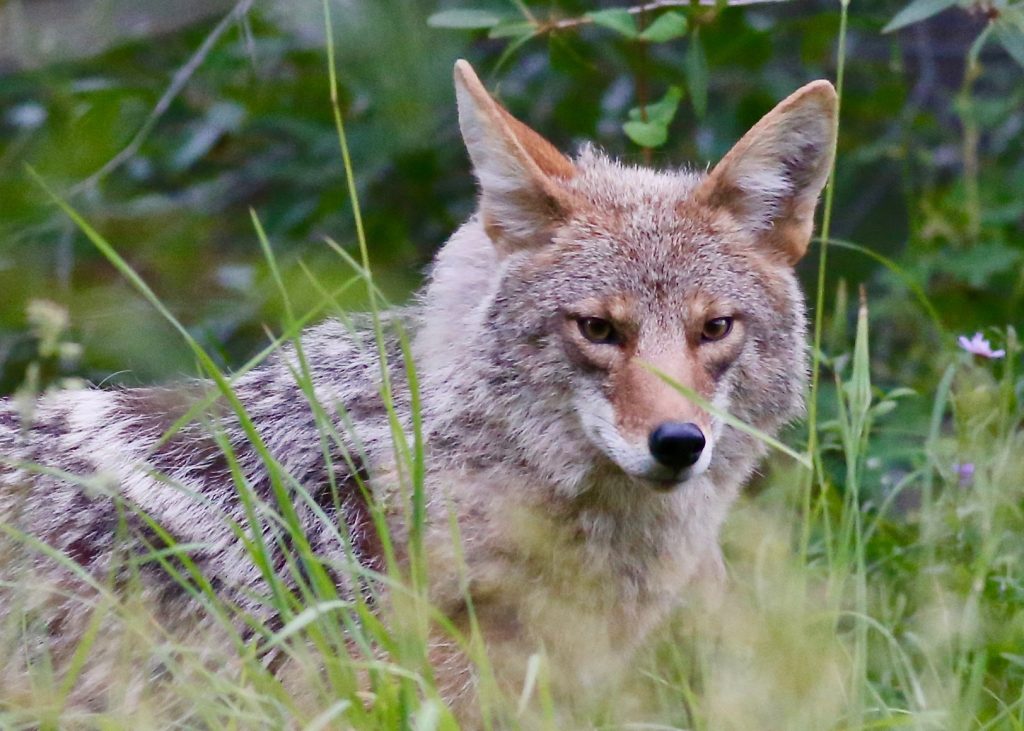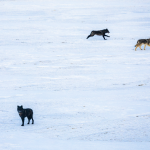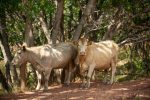Coyote or gray wolf? How to tell the difference in the Roaring Fork Valley
Colorado Parks and Wildlife uses hunting season as opportunity to educate on the two separate species

Austin Colbert/The Aspen Times
As hunting season gets under way, Colorado Parks and Wildlife is warning those with coyote tags to be aware of the differences between coyotes and wolves.
Currently, the federal Endangered Species Act and state law protect gray wolves in Colorado. Coyotes are managed as furbearers, meaning “species with fur having commercial value and which provide opportunities for sport harvest,” according to the Colorado Secretary of State, and can be taken with a small game license. Other furbearers in Colorado include mink, pine marten, badger, red fox, gray fox, swift fox, striped skunk, western spotted skunk, beaver, muskrat, long-tailed weasel, short-tailed weasel, bobcat, opossum, ring-tailed cat, and raccoon.
CPW warns in a press release that, despite their different statuses, coyotes and gray wolves can look similar from a distance.
“There is a small but legitimate concern,” Joey Livingston, CPW statewide public information officer, said of a hunter mistaking one predator for the other. “Wolves are new to Colorado, and the species can look similar, especially from a distance.”
According to a handout created by CPW, gray wolves are roughly twice the size of coyotes — coyotes are shorter and typically lighter on their feet.
“Wolves have larger and blockier snouts/muzzles and shorter and more rounded ears than coyotes, who have longer, narrower features,” the handout reads. “Wolves also have distinctively bushier and shorter tails.”
Coyotes are also known for their high-pitched yips and howls.
Penalties for illegally killing a gray wolf in Colorado can vary, according to CPW, but can include substantial fines, jail time, and loss of hunting privileges. If a hunter mistakes a wolf for a coyote and kills it unintentionally, Livingston confirmed the incident would be “thoroughly investigated” to determine what the penalties would be.
CPW also highlights that hunters with an unfilled big-game license can no longer take coyotes with their unfilled tag. Instead, coyote hunters must now have a small game license and take the 2025 Harvest Information Program survey to harvest coyotes in Colorado.
“The provision has since been removed in an effort to improve coyote harvest estimations, which come from the HIP data from small game and coyote hunters,” Livingston said.
Those who do spot a wolf while out in the backcountry, whether hunting or not, can help CPW biologists monitor the species by filling out the Wolf Sighting Form, available at cpw.state.co.us/wolf-sightings. Be prepared to provide a photo or video, the exact location coordinates, and other detailed information.
Find more wolf educational resources at cpw.state.co.us/living-wolves and more coyote educational resources at cpw.state.co.us/species/coyote.
City of Aspen supports parking cost increase
Aspen City Council supported increasing city parking fees next year to help support public transportation costs, fund an increased demand for parking services, and reduce congestion.










